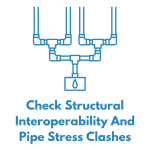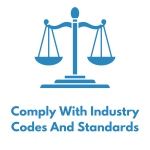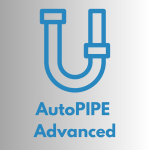AutoPIPE is a sophisticated analysis and design tool designed to compute pipe stress, loads, and deflections across diverse load scenarios. It boasts automation features and unparalleled compatibility with other software applications.




Model, Analyze, And Visualize Pipe Stress:
Improve efficiency through the utilization of object-oriented point-and-click interactive modeling, a streamlined approach that allows for precise control and swift execution. By seamlessly integrating with all major intelligent 3D CAD systems, AutoPIPE ensures consistent results while saving valuable time.
With its robust integration capabilities, AutoPIPE facilitates rapid setup, analysis, and visualization of results across diverse loading scenarios. From thermal and seismic loads to wind and dynamic (response spectra) load cases, users can efficiently evaluate structural performance with confidence. This comprehensive tool empowers engineers to optimize designs and enhance project outcomes with ease.
Check Structural Interoperability And Pipe Stress Clashes:
Enhance model accuracy and ensure a more realistic representation of real-life plants by incorporating support structural stiffness directly into the piping model. This integration allows for a more comprehensive analysis by capturing the interactions between the piping system and its supporting structures. By transferring support reaction loads to STAAD.Pro, engineers can accurately assess the structural response and optimize design decisions.
AutoPIPE enables thorough analysis under any static or dynamic loading condition applied to both piping and structures. Through rigorous evaluation, engineers can determine pipe stress, operational displacements, and clash check them against the entire plant model. This holistic approach ensures that critical factors such as stress concentrations, deflections, and potential clashes are identified and addressed early in the design process, leading to improved safety, efficiency, and reliability of the plant system.
Comply With Industry Code and Standards:
Ensure your projects comply with major American (ASME) and European (EN) metallic piping codes. The software includes API, NEMA, ANSI, ASCE, AISC, UBC, ISO, and WRC guidelines and design load limits. AutoPIPE offers easily accessible, built-in ASME B31J flexibility and stress intensification factor calculations with a simple checkbox.
– Single line, wire-frame, and solid render drawing modes
– CAD style single, double, or quad view ports
– Vertical axis (Y or Z) can be switched on the fly
– On-screen distance calculator for accurate coordinate checks
– Built-in valve actuator for accurate valve modeling
– Segment management: reverse, split, join, and re-order segments
– CAD line class and line numbers
– Connectivity checker to avoid model disconnects
– English, metric, SI, and user-defined units
– Extensive ANSI/ASME, DIN, EN, JIS, GD, GB, GOST, and GRP/FRP
standard piping component and material libraries
– iTwin® Design Review
– Structural steel modeling using structural databases for 17 countries
– Expansion joint modeling with tie rod assemblies
– Model import from AutoPLANT®, OpenPlant®, MicroStation, Excel, AutoCAD, Intergraph PDS, SmartPlant, Aveva E3D, CADWorx, SolidWorks, Inventor, Plant 3D, and CATIA
– Automatic stress isometric generation in DXF, DWG, or DGN formats with engineers’ mark-ups
– Bidirectional integration with STAAD.Pro® and SACS
– Machine learning support arrangement optimization
– Model geometry data export into OpenPlant, MicroStation, and AutoCAD
– Automated ring main wizard
– ASCE Soil calculator with auto soil point discretization
– Time history dynamic analysis with ground motion
– Mode shapes, accelerations, and natural frequencies
– Harmonic load analysis
– Uniform and MSRS response spectrum and shock spectra
– Multiple spectrum enveloping
– NRC spectra and code case N411 (PVRC) damping and spectra
– NUREG.CR-1677, CR-6441, and CR-6049 benchmarks
– Automatic mass discretization
– Missing mass and ZPA correction
– ASME B31.1, B31.3, B31.4, and B31.8 (support for multiple years)
– ASME Sec III, NB, NC, and ND (multiple year from 1972)
– ASME B31.12 hydrogen piping and pipelines
– ASME B31E support for seismic design
– European standards EN13480 metallic (multiple years), EN14692 nonmetallic
– ASME B31.4 Ch IX, B31.8 Ch VIII, DNVGL-ST-F101, CSA-Z622 offshore (multiple years)
– ASME B31.J (2017) SIFs and Flexibilities
– CAN/CSA-Z662 (multiple years)
– ASME B31J calculations for improved SIF values
– Unlimited static analysis to examine different loading scenarios, including hot modulus for any combination of 100 thermal, 30 seismic, 10 wind, and 50 dynamic load cases
– Automatic generation of wind profiles per ASCE and UBC guidelines
– Wave loading and buoyancy for offshore applications
– Hydrotest analysis with locking spring hangers
– Linear and nonlinear hydrotest analysis
– Fluid transient utilities for water and steam hammer plus relief valve load analysis
– Automatic flange analysis to ASME VIII Div. 1 and Div. 2, ASME III App XI, and ANSI Check
– Automatic spring hanger sizing from 27 manufacturers
– State-of-the-art nonlinear support gap, friction, yielding, and soil interaction with advanced features of seismic wave propagation, overburden and settlement loads, and stresses to ASCE, AWWA, and ASME
– Thermal stratification bowing analysis
– Thermal transient analysis (TTA), fatigue, and high energy/leakage design for ASME Class 1
– Seismic static and response spectra load generator to IBC, Euro, ASCE, Indian, Spanish, Mexican, and Chinese standards
– Ec/Eh ratio applied to expansion stresses for any piping code
– Integrated flange loading analysis per ASME VIII
– Div 1 and 2, ASME III App XI, and ANSI B16.5
– Nozzle flexibility analysis per API 650 App. P
– ASME Class 1, WRC 297, and Biljaard methods
– Results saved to Microsoft Access MDB file for post-processing
– Report Manager driven by SQLite Results Database
– Custom Microsoft Excel and Word reports and text reports
– Automatic or user-defined load combinations grid
– Automated batch processing
– Maximum intermediate stresses
– Reference point for manufacturer equipment loading reports
– Rotating equipment calculations to API 610, NEMA and API 617, and user-defined standards
– Results can be filtered and sorted by stress, deflection, or load criteria

Contact Us
SOHO Pancoran, South Jakarta
Block Splendor Wing, 28th Floor
Unit S-2803, South Jakarta, 12810


